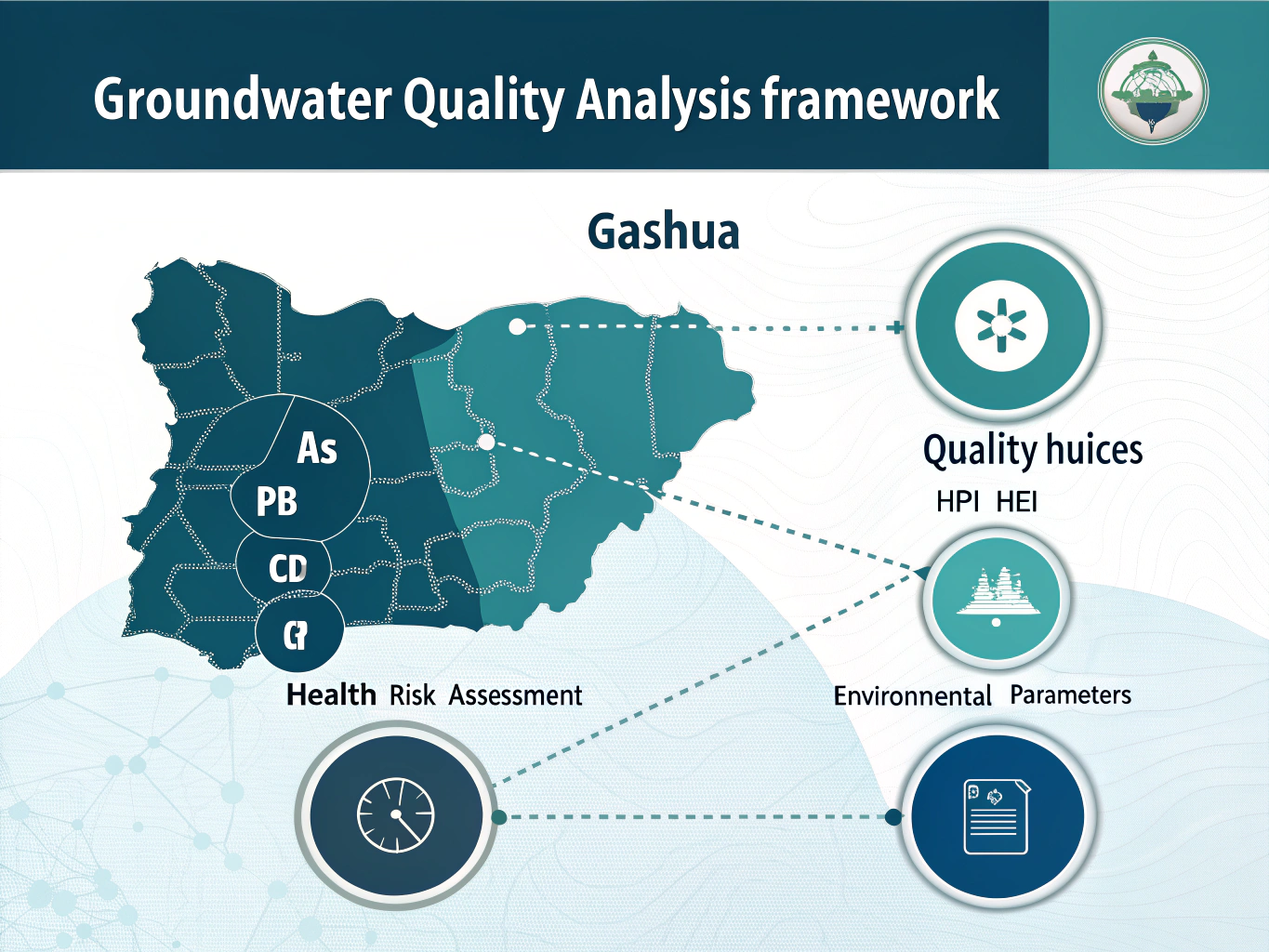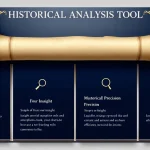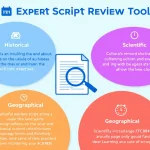Is this tool helpful?
How to Use the Groundwater Quality & Heavy Metal Analysis Tool Effectively
This tool helps you generate a structured framework to analyze groundwater quality and heavy metal contamination. To get accurate and useful results, follow the guidelines for each input field below.
1. Define Your Research Scope
Describe the specific aspects of groundwater quality and heavy metal contamination you want to explore. This helps the tool tailor the analysis framework to your needs. Example inputs:
- “Investigation of groundwater seasonal dynamics and heavy metal accumulation in rural settlements”
- “Impact of mining activities on groundwater hydrochemistry and metal contamination patterns”
2. Provide Detailed Location Information
Include geographic and environmental characteristics of your study area to contextualize the analysis. Example inputs:
- “Latitude 12.9°N, Longitude 11.0°E, semi-arid climate, population approximately 140,000, dominantly alluvial soils”
- “Northern Nigeria region, annual precipitation around 480mm, soil type mostly sandy clay”
3. List Heavy Metals for Analysis
Specify the heavy metals you want to focus on in your groundwater contamination study. Example inputs:
- “Lead (Pb), Cadmium (Cd), Chromium (Cr), Nickel (Ni), Zinc (Zn), Copper (Cu)”
- “Arsenic (As), Iron (Fe), Manganese (Mn), Mercury (Hg), Cobalt (Co), Aluminum (Al)”
4. Specify Health Risk Assessment Parameters
Identify the health risk metrics you want to include to assess potential human health impacts. Example inputs:
- “Hazard Quotient (HQ), Cancer Slope Factor (CSF), Non-carcinogenic risk metrics”
- “Reference Dose (RfD), Hazard Index (HI), Lifetime cancer risk evaluation”
5. Enter Pollution and Contamination Indices
Include standard or customized indices that measure pollution levels for your site. Example inputs:
- “Heavy Metal Pollution Index (HPI), Contamination Factor (CF), Pollution Load Index (PLI)”
- “Ecological Risk Index (ERI), Geo-accumulation Index (Igeo), Degree of Contamination (Cd)”
6. Define the Review Period (Optional)
Set the time frame to focus the literature and data analysis over specific years. Examples:
- “2015-2022”
- “2008 to 2020”
Introduction to the Groundwater Quality & Heavy Metal Analysis Tool
This tool generates a comprehensive research framework that aids you in analyzing groundwater contamination by heavy metals, with a focus on regions like Gashua, Nigeria. It compiles essential components such as hydrogeochemical evaluation, pollution indices, and health risk parameters into a cohesive plan.
Using this framework, you systematically organize your study parameters, helping you deliver consistent and reproducible results. The tool supports contamination assessment by providing a structured approach to quantifying and interpreting heavy metal presence in groundwater.
Key Benefits of the Tool
- Standardizes groundwater quality assessment for diverse research projects
- Incorporates multiple pollution indices and health risk metrics
- Saves time by streamlining research design and literature review
- Enhances clarity and reproducibility of contamination studies
- Facilitates regulatory compliance through customizable parameters
Practical Use and Application of the Tool
The generated framework guides your groundwater contamination study by integrating several critical components:
Water Quality and Heavy Metal Pollution Assessment
You evaluate water quality by analyzing physicochemical properties alongside heavy metal concentrations. The tool supports combining these data points to understand contamination distribution and sources effectively.
Heavy Metal Pollution Index (HPI)
HPI offers a unified metric for assessing heavy metal contamination severity using weighted sub-indices. It’s calculated as:
$$HPI = \frac{\sum_{i=1}^{n} W_i Q_i}{\sum_{i=1}^{n} W_i}$$
- Wi: Weight assigned to the ith parameter
- Qi: Sub-index of the ith parameter’s quality
- n: Total number of parameters
Heavy Metal Evaluation Index (HEI)
HEI measures overall water quality concerning heavy metals by comparing observed values to maximum permissible limits:
$$HEI = \sum_{i=1}^{n} \frac{H_c}{H_{mac}}$$
- Hc: Concentration of the ith heavy metal detected
- Hmac: Maximum admissible concentration for the ith parameter
Health Risk Assessment Integration
The tool helps include health risk parameters such as Hazard Quotient (HQ) and Hazard Index (HI) to evaluate human exposure risks:
$$HQ = \frac{CDI}{RfD}$$
$$HI = \sum_{i=1}^{n} HQ_i$$
- CDI: Chronic daily intake of heavy metals via groundwater
- RfD: Reference dose considered safe for daily intake
- HQ: Hazard Quotient for individual parameters
- HI: Combined Hazard Index for multiple contaminants
Example Applications of the Groundwater Quality Framework
Agricultural Region Contamination Study
- Analyzed metals: Cadmium (Cd), Lead (Pb), Chromium (Cr), Nickel (Ni), Iron (Fe)
- Computed HPI: 79.4 (shows moderate pollution)
- HEI value: 10.8 (indicates considerable heavy metal presence)
Industrial Zone Groundwater Assessment
- Focus metals: Arsenic (As), Mercury (Hg), Lead (Pb), Cadmium (Cd), Zinc (Zn)
- Contamination Factor (CF): ranges between 3.1 and 5.2
- Degree of Contamination (Cd): 21.4 (signifying high pollution levels)
Frequently Asked Questions About the Groundwater Quality Analysis Tool
Q: Which types of groundwater sources does this tool support?
You can analyze groundwater from wells, boreholes, springs, and underground aquifers. The framework adjusts to various hydrogeological conditions.
Q: Can the framework handle data from multiple sampling sites?
Yes, the tool allows organizing data from several sampling locations, making it easier to analyze spatial contaminants distribution and identify pollution hotspots.
Q: Does the tool support analysis of seasonal variations in groundwater quality?
Absolutely. You can include temporal data to assess seasonal changes and trends in heavy metal levels and water quality parameters.
Q: How does the tool accommodate different regulatory limits?
You can customize the framework to align with standards such as WHO guidelines, EPA regulations, or local environmental rules to ensure compliance.
Q: Is this framework suitable for long-term groundwater monitoring studies?
Yes, the framework supports longitudinal studies, helping monitor trends and variations over multiple years for better understanding of contamination dynamics.
Q: Can the results be integrated with GIS platforms?
The output framework can be linked with GIS tools, enabling spatial mapping and detailed visualization of contamination patterns across study areas.
Important Disclaimer
The calculations, results, and content provided by our tools are not guaranteed to be accurate, complete, or reliable. Users are responsible for verifying and interpreting the results. Our content and tools may contain errors, biases, or inconsistencies. Do not enter personal data, sensitive information, or personally identifiable information in our web forms or tools. Such data entry violates our terms of service and may result in unauthorized disclosure to third parties. We reserve the right to save inputs and outputs from our tools for the purposes of error debugging, bias identification, and performance improvement. External companies providing AI models used in our tools may also save and process data in accordance with their own policies. By using our tools, you consent to this data collection and processing. We reserve the right to limit the usage of our tools based on current usability factors.







